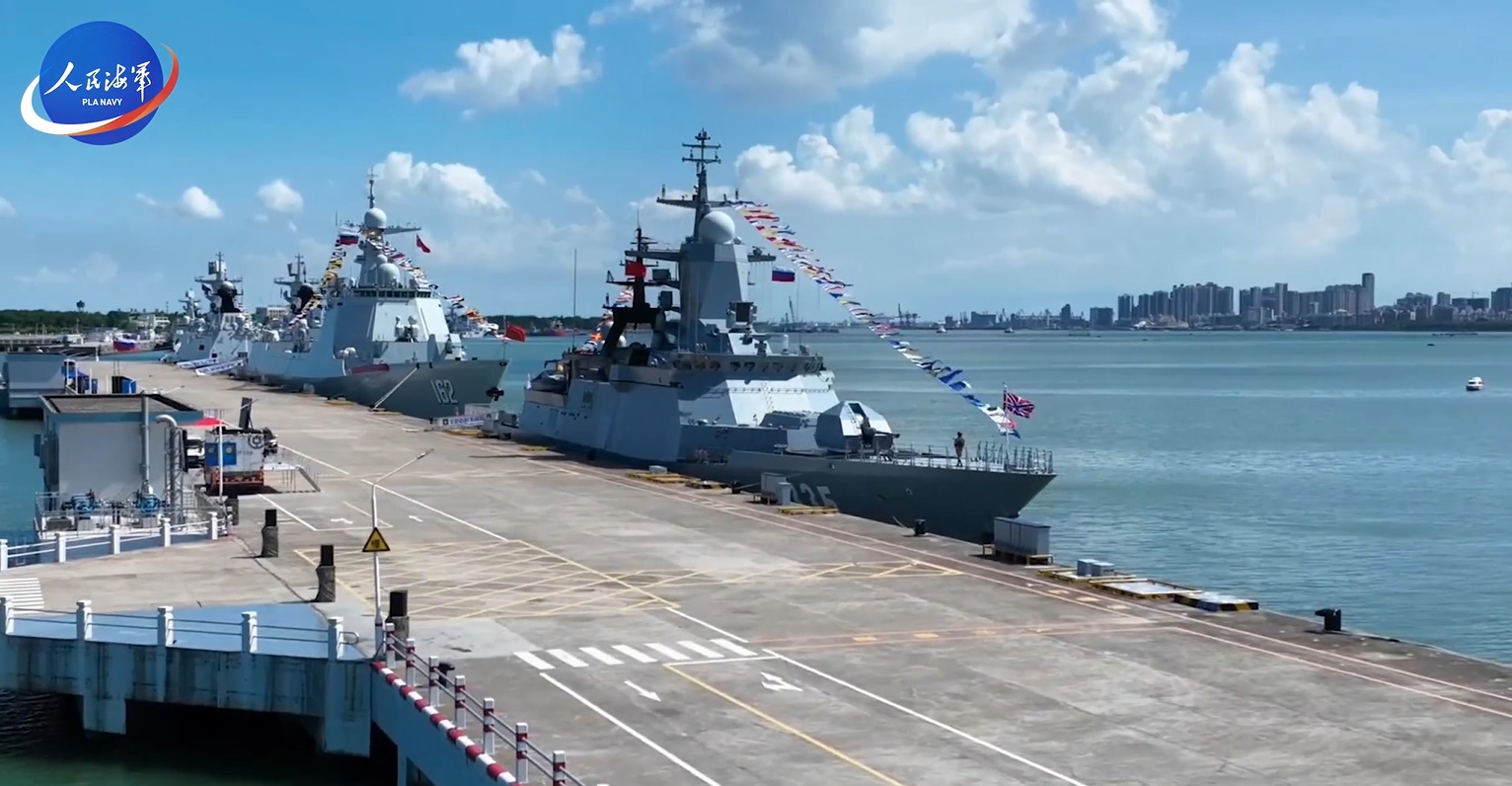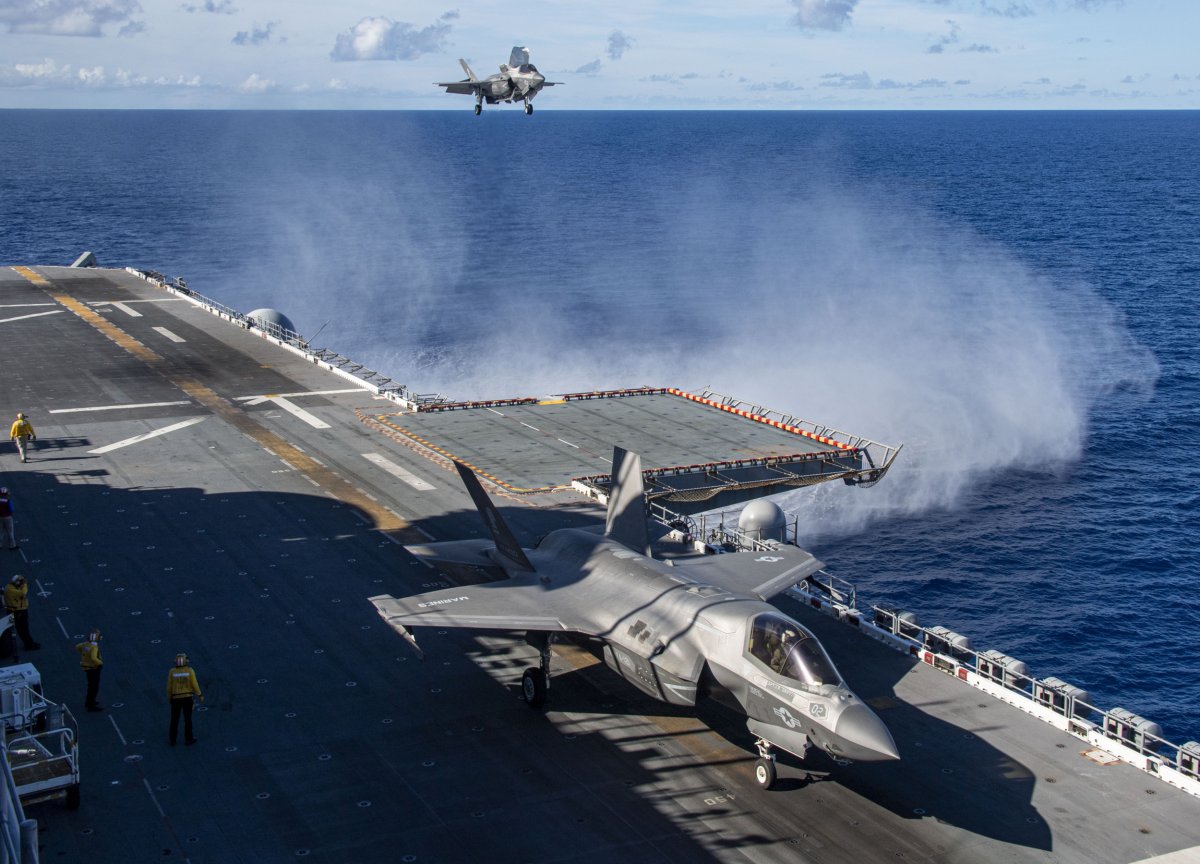Uncommon Knowledge
Newsweek is committed to challenging conventional wisdom and finding connections in the search for common ground.

The quasi-alliance of China and Russia is holding joint naval activities in the South China Sea, China’s navy announced.
On Monday, the Chinese navy reported details about its fourth joint patrol with the Russian navy since 2021 in a post on a social platform. It said the joint naval formation had entered the South China Sea via the Balintang Channel the previous day.
The formation began the patrol in waters around South Korea’s Jeju Island in the East China Sea earlier, the report said. It then transited the Osumi Strait near Japan eastward before heading southward to the South China Sea.
The U.S. Navy regularly holds joint exercises and patrols with its allied navies in the South China Sea. But it is rare for China to do the same, as it views the contested waters as its “backyard.”
The Balintang Channel is located in the Luzon Strait, a strategic choke point that lies between Taiwan to the north, the Philippines to the south, the South China Sea to the west and the Philippine Sea to the east.
Both the Philippines and Taiwan are allies of the United States in the Indo-Pacific region. Taiwan is a self-ruled island claimed by Beijing as a breakaway province. The Philippines has territorial disputes with China in the South China Sea.
China deployed the Type 052D destroyer Yinchuan, Type 054A frigate Hengshui and Type 903 replenishment ship Weishanhu for the joint patrol, while Russia sent the Steregushchiy-class corvette Sovershennyy, the report said.
The joint patrol deepened the mutual understanding and traditional friendship between the Chinese and Russian militaries, the Chinese navy said. It added that the two sides enhanced their abilities to jointly respond to maritime security threats.
In a statement released on Sunday, China’s Defense Ministry said the joint patrol in the western and northern Pacific Ocean did not target a third party and “had nothing to do with the current international and regional situation.”
It is not immediately clear whether the joint patrol has concluded. Newsweek contacted the Chinese and Russian defense ministries for comment by email.
On Sunday, the Chinese and Russian navies commenced “Exercise Joint Sea-2024” in Zhanjiang, a Chinese city located in the southern province of Guangdong that faces the South China Sea. The exercise series began in 2012.
The Chinese navy said the two navies have continued to improve their capability to conduct joint military operations. The Russian navy said the joint exercise could contribute to maintaining maritime and regional security.
Warships from the two sides are set to conduct anchorage defense, joint reconnaissance and early warning, joint search and rescue, and joint air defense and antimissile exercises, the Chinese navy said. Training with the use of weapons is included.
A total of seven ships are participating in the exercise, Chinese state media reported. The Global Times said four were from the Chinese side: the Type 052D destroyer Nanning, Type 054A frigates Xianning and Dali, and Weishanhu.
The Russian side dispatched Steregushchiy-class corvettes Gromkiy and Rezkiy and the oiler Irkut, the outlet said. The exercise is scheduled to run until mid-July.

The Global Times said on Sunday that the joint naval activities between China and Russia were routine and showed a wide scope of naval cooperation, quoting military experts in the country.
There are currently no U.S. Navy aircraft carriers deployed in the South China Sea, as they are on missions in other regions or undergoing maintenance.
Photos released by the U.S. Department of Defense showed USS America, an America-class amphibious assault ship that can perform as a light aircraft carrier, conducting flight operations with the stealthy F-35B fighter jets while underway in the Philippine Sea on Saturday.
Newsweek is committed to challenging conventional wisdom and finding connections in the search for common ground.
Newsweek is committed to challenging conventional wisdom and finding connections in the search for common ground.